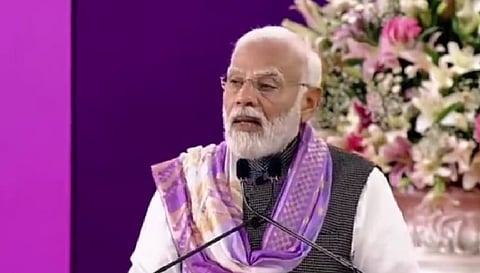
- Home
- Live Blog
- Breaking News
- Top Headlines
- Cities
- NE News
- Sentinel Media
- Sports
- Education
- Jobs

The Central Government’s allocation of Rs. 6621 for the construction of the proposed Frontier Highway in Arunachal Pradesh is a strong reply to China’s unwarranted objection to Prime Minister Narendra Modi’s visit to the border state. India prioritising connectivity in Arunachal Pradesh to push development in far-flung areas is also critical to reversing the migration of people to sparsely populated international borders. Poor connectivity, leading to underdevelopment in these areas, triggered the outmigration of people in search of greener pastures, leaving some of these areas without a significant civilian population. Such populations usually play a crucial role as the eyes and ears of the Indian armed forces. The expedited completion of the greenfield highway project will provide Indian Armed Forces with quicker mobility to border areas, which is vital for securing the frontier from external threats. The 1800-km-long highway will connect Bomdila town in the west to Vijaynagar in the east on the tri-juncture of India, China, and Myanmar and facilitate smoother movement of Indian troops all along the strategic frontier. The push for the Frontier Highway comes close on the heels of Prime Minister Modi virtually dedicating to the nation the Sela Tunnel project during the Viksit Bharat Viksit North East programme in Itanagar on Saturday. The tunnel constructed by the Border Roads Organisation at an altitude of 13,000 feet on the road connecting Tezpur, Assam, to Tawang in the West Kameng district of Arunachal Pradesh provides all-weather connectivity to Tawang. The tunnel built at a total cost of Rs 825 crore will also facilitate smooth and faster troop movement to forward areas close to the Line of Actual Control along the India-China border across the Sela Pass on the Balipara-Chariduar-Tawang Road. With the work on the 2400-km Trans-Arunachal Highway nearing completion sometime this year, the frontier state is poised for rapid progress. These connectivity projects, gradually erasing the image of the backwardness of the state with that of a state well-connected to the country’s road, rail, and air networks, have upset China, which explains its objection to Prime Minister Modi’s visit. India’s External Affairs Ministry, in a statement, while rejecting China’s objection, has conveyed a strong message to the neighbouring country: “Objecting to such visits or India’s developmental projects does not stand to reason. Further, it will not change the reality that the State of Arunachal Pradesh was, is, and will always be an integral and inalienable part of India.” Aruanchal Pradesh is known to be nature’s paradise, which is why its tourism destinations are always on the wish lists of domestic and foreign tourists. Improved connectivity will boost tourism in the state and generate huge livelihood avenues along the tourism value chain. The central and state governments, as well as stakeholders in the tourism industry, must take care that tourism products are sustainable and nature-friendly. The construction of highways and hydropower projects in the state has led to the diversion of vast stretches of forest. Compensatory afforestation getting equal priority is critical to fine-balancing development, strategic importance, and nature conservation to mitigate the impact of climate change. The generation of livelihood opportunities will motivate the people living along the international border to stay in their villages and those who migrated to return to seize these opportunities for economic prosperity at their doorsteps. The Vibrant Village Programme (VVP), a centrally sponsored scheme for the development of 46 villages in 46 border blocks in 19 districts of Arunachal Pradesh, Sikkim, Uttarakhand, Himachal Pradesh, and the Union Territory of Ladakh, includes 455 villages in Arunachal Pradesh. Of these 455 villages, 135 are unconnected. Detailed project reports for 105 road projects to connect 125 of these unconnected villages have already been prepared, and the expeditious completion of the construction of these roads will accelerate comprehensive development in these remote villages along the border. Lessons must be learned from poor implementation of the Border Area Development Programme in the state, and monitoring and periodic review must be undertaken to ensure that VVP projects are not affected by cost and time overruns. The Comptroller and Auditor General had detected gross anomalies in BDAP project implementation in the state. The BADP was initiated on the Western frontier during the Seventh five-year Plan (1985–1990) period and was extended to Arunachal Pradesh and 16 other border states only during the Ninth Plan (1997–2002). This speaks volumes about the negligence of comprehensive development along the strategic frontier state by previous governments, which also created connectivity hurdles in the faster mobility of Indian Army troops to border areas along the LAC while China aggressively built their infrastructure on the other side. The approach of the incumbent central government to combine strategic interests with the comprehensive development of border villages in Arunachal Pradesh has brought rich dividends to the people of the state. In the backdrop of the fast-changing development ecosystem in the state, the Frontier Highway has become a highway of hope for people living in remote and unconnected border villages along the LAC.